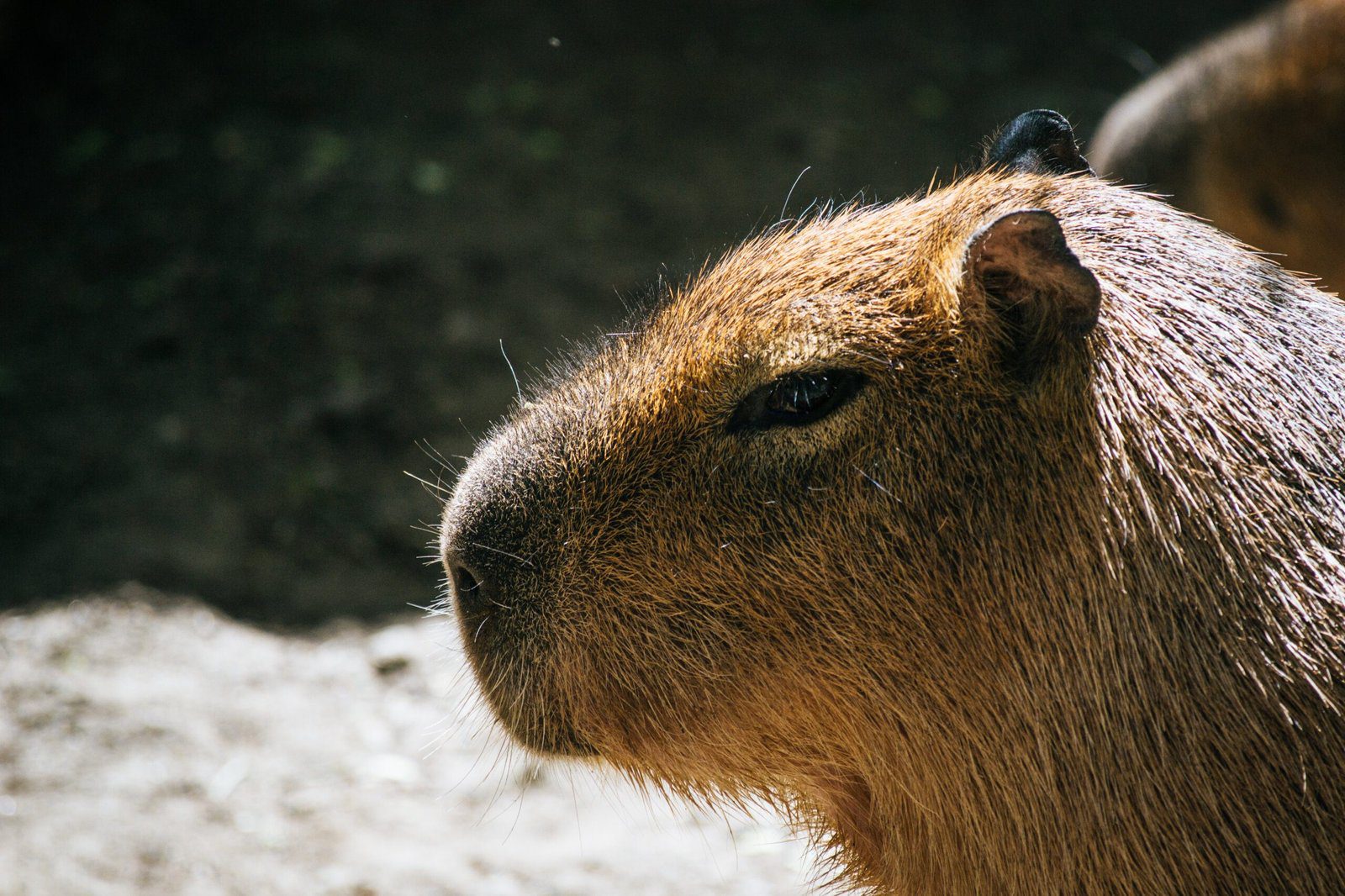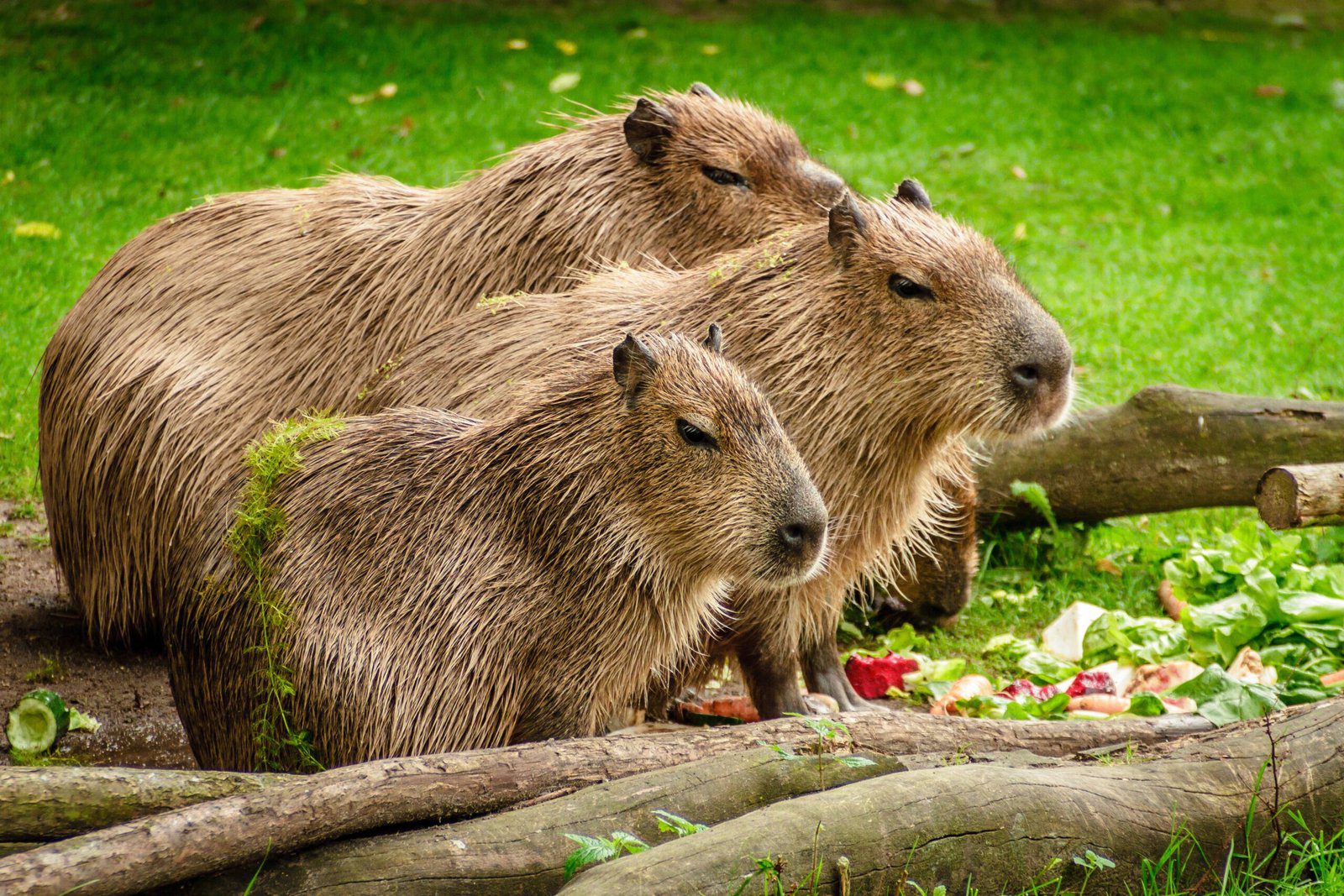Table of Contents
Imagine stepping into a world full of enchanting creatures, where nature unfolds its captivating wonders right before your eyes. In the heart of the picturesque Cotswold Wildlife Park, an extraordinary experience awaits, where you’ll have the remarkable opportunity to explore the park alongside the charming capybaras. As you venture through the lush surroundings, these amiable creatures will be your trusty companions, adding an extra touch of magic to your unforgettable journey. Get ready to embark on an adventure like no other, as you discover the hidden gems of the Cotswold Wildlife Park in the delightful company of the endearing capybaras.

History of Cotswold Wildlife Park
Establishment of the park
The history of Cotswold Wildlife Park dates back to 1970 when John Heyworth, a successful businessman and animal enthusiast, decided to fulfill his dream of establishing a wildlife park. With his passion for conservation and his desire to educate the public about the wonders of nature, Heyworth purchased an estate in Oxfordshire, England, and transformed it into what is now known as Cotswold Wildlife Park.
Mission and goals
From the very beginning, the mission of Cotswold Wildlife Park has been to provide a safe haven for endangered and exotic animals while promoting conservation and education. The park aims to inspire visitors to appreciate the natural world and take action to protect it. With a strong commitment to animal welfare and sustainable practices, Cotswold Wildlife Park strives to be a leader in wildlife conservation and an advocate for the protection of endangered species.
Introduction to Capybaras
Physical characteristics
Capybaras, the largest rodents in the world, are captivating creatures that command attention with their unique appearance. They have stout bodies, short legs, and a barrel-shaped form that can reach up to four feet in length. With a dense, coarse coat that ranges in color from reddish-brown to gray, capybaras are well-adapted to their natural habitats.
Habitat and natural behavior
Capybaras are native to the tropical regions of South America, where they inhabit wetlands, marshes, and riverbanks. They are highly adapted to an aquatic lifestyle and are excellent swimmers. These semi-aquatic creatures are known for their communal behavior, often forming large groups and relying on social interactions to thrive.
Diet and feeding habits
As herbivores, capybaras have a primarily vegetarian diet consisting of grasses, aquatic plants, and fruits. They possess specialized teeth that allow them to efficiently chew and process their food. Capybaras have a unique digestive system that enables them to extract nutrients from plant matter that is typically difficult to digest for other animals.
Social structure and communication
Capybaras are incredibly social animals, forming close-knit groups that can range in size from a few individuals to over 100 individuals. This social structure provides them with increased protection against predators and allows for communal grooming, which is crucial for maintaining strong social bonds. They communicate using a variety of vocalizations, body postures, and scent-marking behaviors.

Capybaras at Cotswold Wildlife Park
Arrival of capybaras
Cotswold Wildlife Park is proud to have several capybaras residing within its grounds. These fascinating animals were carefully selected and brought to the park to enhance the visitor experience and promote conservation efforts.
Purpose of capybara enclosure
The capybaras at Cotswold Wildlife Park have a specially designed enclosure that mimics their natural habitat as closely as possible. This enclosure provides them with ample space to roam, forage, and engage in their natural behaviors. It also allows visitors to observe these remarkable creatures up close while ensuring the safety and wellbeing of both the animals and the guests.
Enclosure Design and Features
Size and layout
The capybara enclosure at Cotswold Wildlife Park is thoughtfully designed to meet the specific needs of these charismatic animals. It encompasses a large area that provides them with plenty of room to move about and explore. The layout includes both land and water elements, allowing the capybaras to enjoy their natural semi-aquatic lifestyle.
Fencing and security measures
To ensure the safety of the capybaras and prevent any unauthorized access, the enclosure is equipped with sturdy fences and reliable security measures. These precautions not only safeguard the animals but also guarantee the well-being of the visitors.
Natural elements in the enclosure
The capybara enclosure at Cotswold Wildlife Park incorporates natural elements such as vegetation, rocks, and logs to create an environment that closely resembles the capybaras’ natural habitat. These features provide the animals with mental stimulation, hiding places, and opportunities for exploration, enhancing their overall well-being.

Daily Care and Maintenance
Feeding and nutrition
Proper nutrition is paramount for the health and well-being of the capybaras at Cotswold Wildlife Park. The dedicated team of animal care professionals ensures that the capybaras receive a balanced diet that replicates their natural feeding habits. This diet consists of a variety of fresh fruits, vegetables, and high-quality grasses.
Healthcare and veterinary support
The well-being of the capybaras at Cotswold Wildlife Park is of utmost importance. The park employs a team of experienced veterinarians who provide regular health check-ups and medical care as needed. These professionals closely monitor the capybaras’ overall health and well-being, ensuring that they receive the best possible care.
Enrichment activities
To stimulate the capybaras’ natural instincts and promote their mental and physical well-being, the animal care team at Cotswold Wildlife Park engages them in a variety of enrichment activities. These activities include puzzle feeders, toys, and opportunities for social interaction, all aimed at providing the capybaras with a fulfilling and enriching environment.
Education and Conservation
Visitor education programs
Cotswold Wildlife Park is committed to promoting education and awareness about capybaras and other wildlife. The park offers various educational programs, such as guided tours, talks, and interactive displays, to give visitors the opportunity to learn about capybaras’ unique biology, natural behavior, and the conservation efforts being made to protect them.
Contribution to capybara conservation
Cotswold Wildlife Park actively participates in conservation initiatives aimed at protecting capybaras and their natural habitats. The park supports research projects, collaborates with conservation organizations, and raises funds to contribute to capybara conservation efforts both locally and globally. By doing so, the park plays a vital role in ensuring the long-term survival of these remarkable animals.
Observing Capybaras
Best viewing locations
Visitors to Cotswold Wildlife Park have the opportunity to observe capybaras up close and appreciate their unique behaviors. The capybara enclosure provides several viewing areas that offer optimal visibility and comfort for guests. These areas are strategically positioned to provide unobstructed views and allow visitors to observe the capybaras’ daily activities.
Behavioral observations
Capybaras are captivating animals to observe due to their social nature and a wide range of behaviors. At Cotswold Wildlife Park, visitors can witness capybaras engaging in communal grooming, vocalizing, and playing with each other. Spending time observing their interactions provides valuable insight into their fascinating lives and enhances the overall visitor experience.
Interaction Opportunities
Feeding experiences
For those seeking a more interactive and hands-on experience, Cotswold Wildlife Park offers feeding experiences with the capybaras. Visitors have the opportunity to feed these charismatic creatures under the guidance of the park’s knowledgeable staff. This unique opportunity allows guests to get even closer to the capybaras and learn about their feeding habits firsthand.
Animal encounters
In addition to feeding experiences, Cotswold Wildlife Park offers animal encounters where visitors can have an up-close and personal interaction with the capybaras. These encounters provide a unique chance to touch and interact with these remarkable creatures while learning about their natural behaviors and conservation needs.
Photography sessions
For wildlife enthusiasts and photography lovers, Cotswold Wildlife Park offers special photography sessions with the capybaras. These sessions provide individuals with exclusive access to capture stunning photographs of these animals in naturalistic settings. Photographers have the opportunity to learn about capybaras’ behavior and receive guidance from experienced staff, ensuring they can capture memorable shots.
Other Wildlife at Cotswold Wildlife Park
Diversity of species
While the capybaras are undoubtedly a highlight at Cotswold Wildlife Park, the park is also home to a diverse range of other fascinating species. From majestic big cats to playful primates and exotic birds, visitors can explore a world of wildlife and enjoy discovering the natural wonders of the animal kingdom.
Notable attractions
Apart from the capybara enclosure, Cotswold Wildlife Park boasts several notable attractions for visitors to enjoy. From the stunning Manor House and its beautiful gardens to the Madagascar exhibit and the Lemur Walkthrough, the park offers a plethora of unique opportunities to engage with wildlife and immerse oneself in the wonders of nature.
Planning Your Visit
Tickets and opening hours
To ensure a seamless and enjoyable visit to Cotswold Wildlife Park, it is recommended to book tickets in advance. Ticket prices vary depending on the day and time of visit and can be purchased online or at the park’s entrance. The park is open year-round with varying opening hours, so it is advisable to check the website for the most up-to-date information.
Getting to Cotswold Wildlife Park
Cotswold Wildlife Park is conveniently located in Oxfordshire, England, making it easily accessible by both private and public transportation. The park provides ample parking facilities for those arriving by car, and there are also public transport options available. Specific directions and transport options can be found on the park’s website.
Facilities and amenities
Cotswold Wildlife Park offers a range of amenities to ensure visitors have a comfortable and enjoyable experience. The park features various dining options, including cafes and picnic areas, where guests can indulge in a delicious meal or relax amidst the picturesque surroundings. Additionally, there are restroom facilities, gift shops, and a visitor center that provides information on the park’s wildlife and conservation efforts.
With its rich history, commitment to conservation, and captivating capybaras, Cotswold Wildlife Park promises an unforgettable journey through the wonders of the animal kingdom. Whether you are a wildlife enthusiast, a nature lover, or simply seeking a unique and educational experience, a visit to Cotswold Wildlife Park is bound to leave a lasting impression.

